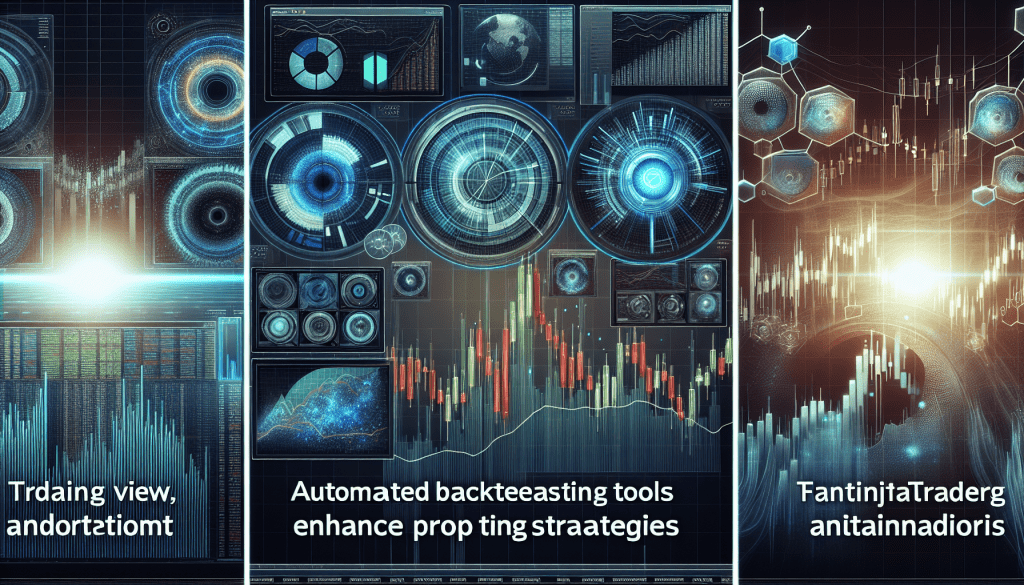Automated Backtesting Tools: Expert Prop Trading Guide
In the fast-paced world of prop trading, staying ahead means leveraging the most advanced and reliable tools. Automated backtesting tools have become critical in helping prop trading professionals refine strategies, optimize risk management, and maximize returns. This guide provides actionable insights, detailed comparisons, and hands-on strategies for both retail traders and institutional trading firms.

Understanding Automated Backtesting in Prop Trading
Automated backtesting plays a vital role in validating algorithmic trading systems by allowing traders to simulate strategies using historical data. Critics assert that while past performance is no guarantee of future results, thorough backtesting is indispensable for identifying robust trading strategies and enhancing risk management practices. With regulatory frameworks such as MiFID II and ESMA in place, prop trading firms must ensure their automated systems adhere strictly to compliance requirements.
Key Benefits of Automated Backtesting
- Efficiency: Automates the backtesting process, reducing manual errors.
- Reliability: Generates quantitative performance metrics like Sharpe ratios and profit factors.
- Strategy Optimization: Enables traders to adjust parameters and stress-test strategies under various market conditions.
Top Automated Backtesting Tools for Prop Trading
Choosing the right automated backtesting tool is crucial. Below, we compare several renowned platforms that are popular among prop trading professionals:
| Tool | Strengths | Best For | Unique Features |
|---|---|---|---|
| TradingView | User-friendly interface, extensive charting tools | Chart analysis & social trading | Real-time updates, powerful scripting with Pine Script |
| NinjaTrader | Advanced analytics, customizable strategies | Futures and forex traders | Robust simulation environment and strategy optimization |
| MetaTrader 5 | Market depth analysis, multi-asset support | Algorithmic and retail traders | Automated trading scripts, enhanced backtesting capabilities |
| QuantConnect | Cloud-based computational power, extensive data library | Quantitative traders | Lean Algorithm Framework for in-depth simulation |
| Trade Ideas | Real-time scanning, AI-powered strategy generation | Stock traders | Innovative risk management tools and brainstorming features |
As you evaluate these platforms, consider factors such as pricing tiers, tool integration, and compliance with trading regulations like the NFA rules.
Figure 1: Visual representation of an automated backtesting tool interface integrated with prop trading data.
Implementing Backtesting Strategies in Prop Trading
For prop trading professionals, implementing effective backtesting isn’t just about running simulations; it’s about iterative improvement. Here’s a concise framework to achieve reliable results:
1. Defining Your Trading Strategy
Crafting a strategy begins with clearly outlined hypotheses. Break down your trading approach into entry and exit conditions, risk management rules, and position sizing strategies. Many automated systems allow you to code these conditions directly into trading algorithms. Consider using platforms such as Backtrader or Amibroker if you need more control and customization.
2. Testing with Historical Data
Utilize historical market data spanning various economic cycles to test your parameters. For instance, assess performance metrics such as:
- Sharpe Ratio: Aiming for a ratio above 1.0 can signal a favorable risk-reward balance.
- Maximum Drawdown: Generally, a drawdown below 20% is considered acceptable.
- Profit Factor: Ratios above 1.5 suggest robust strategy performance.
3. Refining Your Algorithm
After initial testing, refine your system by tweaking parameters and running multiple iterations. Incorporate machine learning techniques where applicable. A simple code snippet for an automated trading check might look like:
// Sample algorithm snippet in Pine Script (TradingView)
strategy("Simple Moving Average Cross", overlay=true)
shortMA = sma(close, 14)
longMA = sma(close, 50)
if (cross(shortMA, longMA))
strategy.entry("Buy", strategy.long)
Risk Management and Regulatory Considerations
Sound risk management is paramount. Prop traders must adhere to strict internal controls and regulatory frameworks such as MiFID II, ESMA regulations, and NFA guidelines to ensure market integrity and client protection. Develop a risk management checklist that includes:
- Daily loss limits
- Stop-loss and take-profit parameters
- Leverage and margin management
Real-World Case Study: Prop Trading Firm Success
Consider the case of Global Prop Traders, a firm that leveraged automated backtesting tools to refine its algorithmic trading strategies. By adopting platforms like NinjaTrader and QuantConnect, the firm achieved a consistent Sharpe ratio of 1.4 over a two-year period. Their strategy toolkit enabled them to maintain a maximum drawdown of under 15%, well within industry benchmarks. Such case studies emphasize the tangible benefits offered by modern backtesting and risk management protocols.
Actionable Next Steps for Prop Traders
For traders looking to integrate automated backtesting into their prop trading arsenal, consider these steps:
- Review your current trading strategy and identify any gaps.
- Experiment with at least two different automated backtesting tools (e.g., TradingView and MetaTrader 5).
- Join industry webinars or trial software demos to understand tool specifics.
- Implement a rigorous risk management checklist and update it regularly.
Figure 2: Promo visual highlighting actionable backtesting strategies integrated in prop trading systems.
Integrating Internal Resources for Continuous Improvement
To further consolidate your prop trading expertise, explore our internal resources:
- Effective Risk Management in Prop Trading – Explore advanced techniques to protect your capital.
- Advanced Prop Trading Strategies – Learn from expert case studies and actionable methods.
Industry Insights and Final Thoughts
As of October 2023, the integration of automated backtesting tools in prop trading continues to drive innovation and strategic refinement across the industry. Embracing these tools not only increases operational efficiency but also enhances decision-making through data-driven insights. Whether you are a seasoned trader or an emerging talent, consistent evaluation and iterative refinement of your strategies remain the keys to success.
In conclusion, automated backtesting tools are indispensable for prop trading. They provide the framework necessary for testing, refining, and executing high-performance trading algorithms. Apply these insights today to elevate your trading strategies and ensure your prop trading firm stays ahead of the curve.
Next Step: Download our detailed Risk Management Checklist here to integrate robust controls in your trading workflow.







